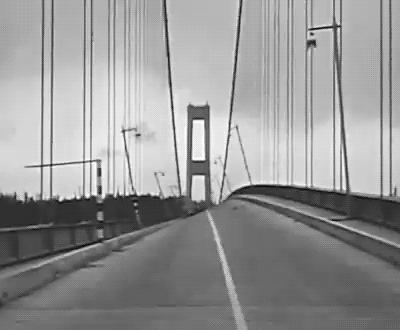It certainly wouldn’t benefit the American Society of Civil Engineers to slap an “A” grade on every bridge in the U.S., but I don’t think many doubt the organization’s dismal grades for our infrastructure. In a NYRB piece, Elizabeth Drew reviews a raft of books on the topic, including Henry Petroski’s The Road Taken: The History and Future of America’s Infrastructure.
Drew shares small, interesting details (there are still wooden pipes working beneath the White House) and big-picture fears (only calamity may force us to catch up to much of the rest of the world). On the latter topic, she surmises that “it may require even more widespread paralyzed traffic, the collapse of numerous bridges, and perhaps a revolt in parts of the country that have inadequate broadband.” Well, let’s hope not. She also surveys the current Presidential candidates’ plans for remaking our roads and airports, uncovering a lot of fuzzy math.
An excerpt:
The water pipes underneath the White House are said to still be made of wood, as are some others in the nation’s capital and some cities across the country. We admire Japan’s and France’s “bullet trains” that get people to their destination with remarkable efficiency, but many other nations have them as well, including Russia, Turkey, and Uzbekistan. A friend of mine recently rode on the Turkish bullet train and noted that the coffee in his full cup didn’t spill. Last year, Japan demonstrated its new maglev train, which, using electromagnets, levitates above the tracks, and can go about an amazing 375 miles per hour, making it the fastest train in the world. The fastest commercially used maglev, in Shanghai, goes up to 288 miles per hour. But the United States hasn’t a single system that meets all the criteria of high-speed rail. President Obama has proposed a system of high-speed railroads, which has gone nowhere in Congress.
When it comes to providing the essentials of a modern society, it has to be said that we’re a backward country. California Governor Jerry Brown, a longtime visionary, has initiated the building of a high-speed rail system between Los Angeles and San Francisco; one high-speed rail system scheduled to come into service soon to carry people between the wealthy cities of Dallas and Houston will be privately financed. (Shopping and business made easier.) But not many communities have the means to build their own train.
Every four years, the American Society of Civil Engineers (ASCE) conducts a study of where the United States stands in providing needed infrastructure in various sectors. Though the organization obviously has an interest in the creation of more construction jobs, its analyses, based as they are on information from other studies, are taken seriously by nonpartisan experts in the field. In the ASCE’s most recent report card, issued in 2013, the combined sectors received an overall grade of D+. In the various sectors, the grades were: aviation, D; bridges, C+; inland waterways, D–; ports, C; rail, C+; roads, D; mass transit, D; schools, D; hazardous waste, D; drinking water, D. No sector received an A. That none of the infrastructure categories received an F is hardly grounds for celebration.•
Tags: Elizabeth Drew, Henry Petroski

